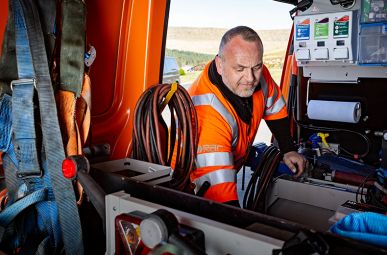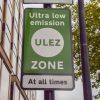Initially brought in by London Mayor Sadiq Khan, the aim of the scheme was to reduce traffic in residential areas of the city.
They use barriers, bollards, road signs, and planters to restrict cars, vans, and other vehicles, whilst allowing pedestrians and cyclists through. Other areas use automatic number plate recognition cameras.
Supporters of LTNs believe that they can be useful in tackling climate change, reducing car usage, and increasing the number of cyclists.
Despite Khan’s aim to reduce traffic, recent Department for Transport (DfT) figures show that total miles driven in the ten inner London boroughs that introduced LTNs or similar schemes (such as lane removal or pedestrianisation) increased by an average of 41 million miles in 2021 compared to the previous year – an 11.4% rise.
When looking at Westminster and Kensington and Chelsea for comparison, (the two inner London boroughs in the DfT data that did not implement LTNs in 2020) they saw an average increase of only 29 million miles, or 8.9%.
According to the new data, if the total miles driven in inner London’s LTN boroughs had increased at the same rate as the non-LTN boroughs, it would have saved 89 million miles of driving. This would have reduced thousands of tonnes of CO2 emissions.
RAC spokesman Rod Dennis said: “If LTNs are successful in reducing overall motor traffic and encouraging more active travel then they can be seen as a positive intervention. If, on the other hand, they are simply causing traffic – and associated air pollution – to be displaced onto other streets not covered by LTNs then they are of little to no benefit.
“Therefore, it’s very worrying that traffic studies haven’t been carried out to definitively prove that existing schemes haven’t just shifted problems elsewhere.
“Councils considering introducing LTNs in the future will get more people on side if they can demonstrate there are benefits for everyone rather than the relative few who no longer have as much traffic outside their homes.
“What’s more, if the objective is to get more people to walk and cycle, councils should also look at other options alongside LTNs – indeed, research for this year’s RAC Report on Motoring shows that 23% of drivers would cycle for some trips rather than drive if there were more dedicated cycle lanes.”
- London Ultra Low Emission Zone – all you need to know
- Clean Air Zones – what are they and where are they?
- Emissions news – RAC Drive
Proving a link between LTNs and traffic growth between 2020 and 2021 is naturally made difficult because the coronavirus lockdowns drastically impacted driving habits in the capital.
Following their introduction in London there have been strong opinions on LTNs from both sides of the debate.
Opponents believe that the schemes are not as green as stated by Khan, and that they make drivers find alternative routes, which increases the amount of time spent in traffic.
However, supporters believe that this is offset by fewer people using cars in LTN areas in favour of alternative transport.
After the DfT data was originally reported by The Times, supporters of the scheme have questioned the validity of recent LTN criticism.
The exchange below between the newspaper’s Andrew Ellson and campaigner Jon Burke highlights the two opposing points of view. Click through to read the full thread.
1/ Yesterday, we were treated to another statistics masterclass from anti-Low Traffic Neighbourhood journalist Andrew Ellson, of @thetimes.
— Jon Burke FRSA �� (@jonburkeUK) October 25, 2022
Since I'm mentioned in the piece - a weird fixation - which cherry-picks DfT data to falsely imply LTNs increase mileage, this is my reply. pic.twitter.com/YblK3355xa
This is the second time LTNs have hit the headlines in recent weeks, as it was reported that data used to justify the introduction of LTNs was incorrect.
Do you believe that LTNs are a good idea? Should they be introduced in more cities around the UK? Leave your comments below.

RAC sale – up to 33% off*
• Roadside cover from £5.29 a month†
• We get to most breakdowns in 60 mins or less
• Our patrols fix 4/5 breakdowns on the spot











